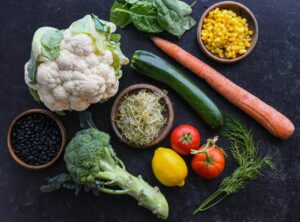Plant-Based Diet—A Growing Trend: 6 Secrets for Success
The world of nutrition is buzzing with the growing popularity of the plant-based diet. More and more people are shifting toward plant-centric meals, and for good reasons. Whether driven by health concerns, environmental impact, or a desire to lead a more compassionate lifestyle, the plant-based diet is transforming the way we eat. But, like any lifestyle change, embracing a plant-based diet comes with its own challenges and rewards. In this article, we will explore what makes the plant-based diet so appealing, how to start, and some delicious, easy-to-make recipes that will make the transition smoother. Let’s dive into the secrets behind this growing trend and how you can benefit from it.

1. What Is a Plant-Based Diet, and Why Is It Trending?
before i start do not forget your gift
Prior to getting into the “how-to,” it’s critical to comprehend the true nature of a plant-based diet. Fruits, vegetables, whole grains, legumes, nuts, and seeds are the mainstays of a plant-based diet, which minimizes or eliminates animal products altogether. Making plants the main ingredient in your meals is more important than strictly following a vegan or vegetarian diet.
Why is it popular, then? The popularity of the plant-based diet can be attributed to a number of factors:
Benefits to health: A plant-based diet has been associated in numerous studies with a decreased risk of heart disease, high blood pressure, diabetes, and even some types of cancer. The diet is a powerhouse for general wellness because it is high in fiber, vitamins, and other nutrients.
Environmental impact: People are becoming more conscious of their ecological footprint as a result of growing knowledge of climate change. Compared to meals based on animals, plant-based diets are more resource-efficient and need less energy, land, and water.
Animal welfare: More people are reconsidering their use of animal products as a result of ethical worries about factory farming and animal abuse.
Weight control: Because a plant-based diet emphasizes full, nutrient-dense foods, many people find that it aids in both weight loss and management.
The plant-based diet is a movement that is here to stay for a number of reasons, including ethical, environmental, and health-related ones.

2. The Health Benefits of a Plant-Based Diet
A plant-based diet is popular among doctors, nutritionists, and health enthusiasts due to its well-established health benefits. The following are just a handful of the main health advantages of a plant-based diet:
Decreased risk of heart disease: Diets based on plants naturally include less cholesterol and saturated fat, two factors that raise the risk of heart disease. According to studies, those who eat a plant-based diet had reduced blood pressure, cholesterol, and body mass index (BMI), all of which lower the risk of heart disease.
Reduced risk of type 2 diabetes: Eating a diet high in whole plant foods helps increase insulin sensitivity and help control blood sugar, both of which reduce the risk of type 2 diabetes.
Cancer prevention: A plant-based diet high in fruits, vegetables, and antioxidants may help lower the chance of developing several cancers, according to some study. Strong anti-cancer chemicals can be found in berries and cruciferous vegetables like kale and broccoli.
Weight reduction and management: Diets based on plants typically contain more fiber and less calories, which aids with weight control. In addition to making you feel filled for longer, the fiber in fruits, veggies, and whole grains also helps you avoid overeating.
Better digestion: Plant-based meals’ high fiber content promotes regular bowel movements and healthy digestion, which lowers the risk of constipation and other digestive problems.
These health benefits are a big draw for those looking to make a positive change in their lifestyle, and for many, the results can be life-changing.
3. How to Start a Plant-Based Diet—A Step-by-Step Guide
At first, adopting a plant-based diet may seem overwhelming, but it need not be. You don’t have to switch to a plant-based diet right now. Rather, small adjustments are easier to maintain and less daunting. Here’s a detailed guide to make the switch to a plant-based diet easier for you:
Step 1: Begin by doing what you enjoy.
List the foods you already like that are plant-based. Do you enjoy stir-fries, salads, or smoothies? Increase the amount of them in your regular meals to start. The shift will seem seamless as a result.
Step 2: Don’t subtract; add
Consider what you can include rather than what you can’t consume. Throughout the week, try to eat more plant-based meals without feeling as though you’re “missing out” on anything. For example, include a vegetarian wrap or a bean chili in your weekly food plan.
Step 3: Try Different Plant-Based Proteins
Concerns about not getting enough protein on this diet are common. However, a variety of plant-based protein sources are available, including chickpeas, quinoa, tofu, tempeh, beans, lentils, and nuts. Experiment with these sources to see which you like best.
Step 4: Make a Meal Plan
When starting a new diet, meal planning is essential. To prevent reverting to previous eating patterns, schedule plant-based meals in advance. This could entail preparing larger quantities of meals, such as soups, curries, or stews, that you can consume throughout the week, or it could entail preparing components on the weekend.
Step 5: Look for Plant-Based Alternatives
Try plant-based substitutes like almond milk, oat milk, or coconut yogurt if you’re accustomed to certain animal-based mainstays like milk or yogurt. Nowadays, practically anything, including cheese and meat, can be replaced with a wide range of plant-based alternatives at most supermarkets.
Step 6: Maintain Equilibrium
It’s a common error to concentrate only on avoiding animal products without making sure your diet is balanced. To meet all of your nutritional needs, make sure you’re eating a diverse range of fruits, vegetables, whole grains, and healthy fats.

4. Easy and Delicious Plant-Based Recipes to Get You Started
Cooking plant-based doesn’t have to be complicated. Here are a few easy, nutritious, and tasty recipes to help you transition smoothly into a plant-based lifestyle.
Breakfast: Creamy Oatmeal with Berries and Almond Butter
Ingredients:
- 1 cup oats
- 2 cups almond milk
- A handful of mixed berries (blueberries, raspberries)
- 1 tablespoon almond butter
- 1 teaspoon chia seeds
- A drizzle of maple syrup (optional)
Instructions:
- In a pot, combine the oats and almond milk. Bring to a boil, then reduce the heat and simmer for 5 minutes.
- Pour the oatmeal into a bowl, top with berries, almond butter, and chia seeds. Drizzle with maple syrup if desired.
- Enjoy a hearty, nutrient-packed breakfast!
Lunch: Quinoa Salad with Chickpeas and Avocado
Ingredients:
- 1 cup cooked quinoa
- ½ cup canned chickpeas (rinsed and drained)
- 1 ripe avocado, diced
- A handful of cherry tomatoes, halved
- 2 tablespoons olive oil
- 1 tablespoon lemon juice
- Salt and pepper to taste
Instructions:
- Combine the quinoa, chickpeas, avocado, and cherry tomatoes in a bowl.
- Drizzle with olive oil and lemon juice, then season with salt and pepper.
- Toss everything together and serve immediately or store in the fridge for later.
Dinner: Lentil and Vegetable Curry
Ingredients:
- 1 cup red lentils
- 1 can coconut milk
- 2 tablespoons curry powder
- 1 onion, diced
- 2 garlic cloves, minced
- 1 carrot, sliced
- 1 zucchini, diced
- 1 cup spinach
- Salt and pepper to taste
Instructions:
- Sauté the onion and garlic in a pot until translucent.
- Add the carrots, zucchini, lentils, and curry powder. Stir to coat.
- Pour in the coconut milk and simmer for 20-25 minutes, until the lentils are soft.
- Stir in the spinach and cook for another 5 minutes. Season with salt and pepper.
- Serve the curry over rice or quinoa for a satisfying meal.
5. Common Challenges and How to Overcome Them
Making the conversion to a plant-based diet has its own set of difficulties, just like any other dietary adjustment. Here are some tips for overcoming some of the most typical challenges:
Cravings for animal products:
When beginning a plant-based diet, it’s common to experience cravings for things you are accustomed to. Find plant-based alternatives to your favorite foods rather than giving in. Try meatless meatballs, sausages, or plant-based burgers, for instance.
Social pressure:
Going out to eat or to social gatherings can be challenging at first. When dining out, seek for establishments that provide plant-based options or consult the menu in advance. Don’t be scared to request modifications, and let friends and family know about your dietary preferences so they can encourage you.
Nutritional concerns:
Use a range of plant-based foods and, if needed, supplements to make sure you’re getting enough of important nutrients including protein, vitamin B12, iron, calcium, and omega-3s.

6. The Environmental Impact of a Plant-Based Diet
The environmental impact of a plant-based diet is one of the strongest arguments for switching, aside from personal health. Deforestation, water use, and greenhouse gas emissions are all significantly impacted by animal husbandry. You may drastically lower your carbon footprint by switching to a plant-based diet.
Decreased emissions: Compared to diets high in animal products, plant-based diets use less energy, land, and water.
Conserving water: Raising livestock requires a lot of water. One pound of beef, for instance, needs roughly 1,800 gallons of water to produce, but one pound of veggies only needs about